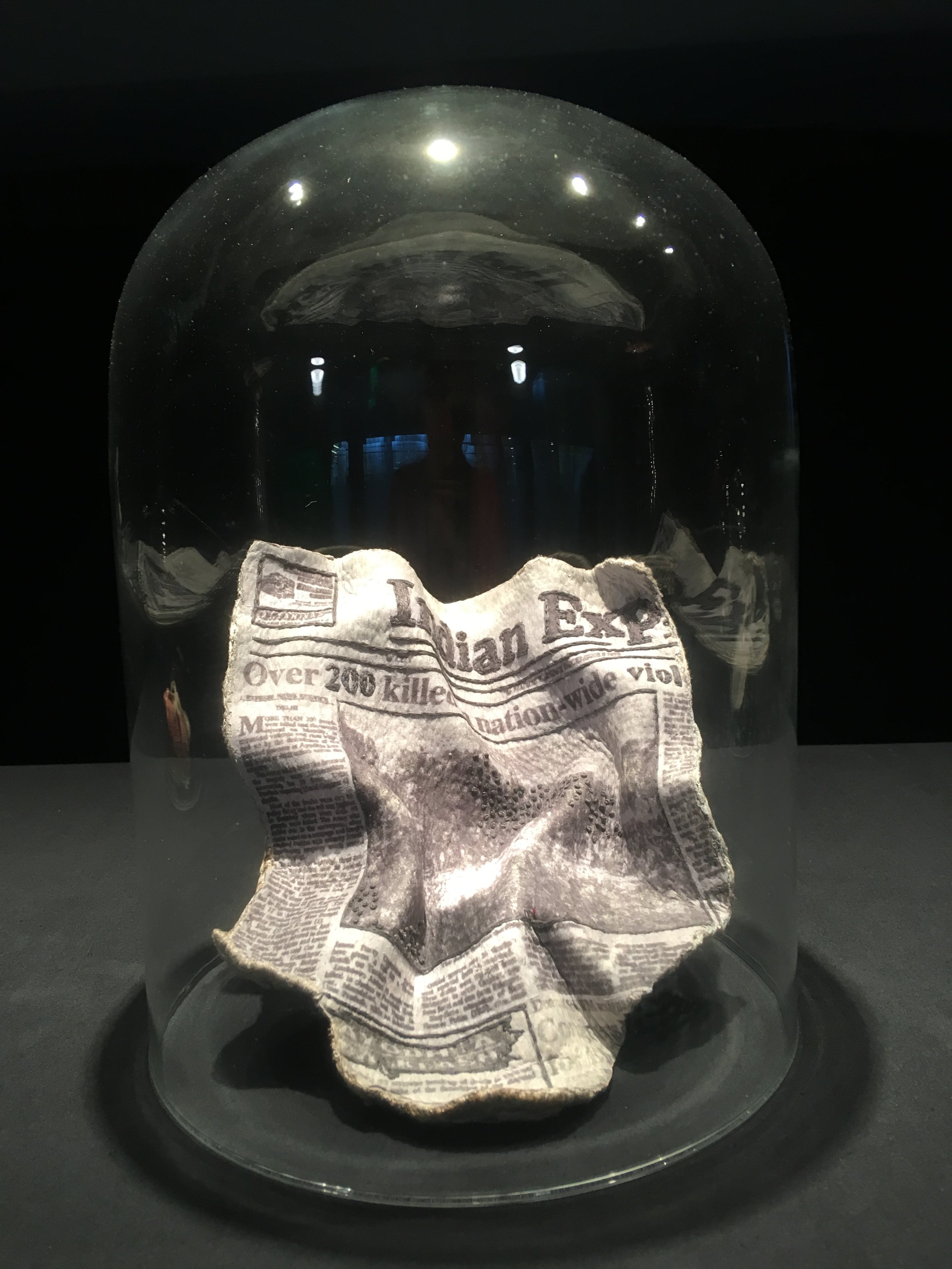bashaoor
naqvi’s first solo exhibition, bashaoor (2018), shown at clark house, mumbai and haus der kulturen der welt, berlin, as part of the forecast festival.
they worked under the guidance of two master craftsmen, chandrakant chitara and zubair bhai who helped shape their ideas and work and further under the mentorship of art historian david elliot. bashaoor is an attempt to translate a history of communal violence through craft traditions, depicting personal and political narratives through rooted crafts that embody their own complex histories.
naqvi comes from a textile background, their training is in textile design and craft. they also owe this skill to their maternal lineage of embroiderers, repairers and seamstresses.
SHRINE OF MEMORIES / embroidered sculptures, metal mesh and embroidery thread
/ cup: 2 x 3.5 in. / newspaper: 6.5 x 5 in. / book: 5 x 6 x 4 in. / shoe: 1.4 x 3 x 1.5 in. / lock: 1 x 3.5 x 2.3 inches
SHANAKHT (identity) / 2018 textile triptych, 200x100cm, 100x50cms, 100x50cms / textile painting / natural dyes / bamboo kalam/stick / (kalamkari)
'shanakht' uses a traditional technique of hand-painted textiles in a contemporary context. native to gujarat, 'mata ni pachedi' is craft practiced by the waghari community that began making temple cloths or painted shrines, depicting stories of the mother goddess. due to their nomadic origins and caste position in the casteist indian society, this craft was born out of marginalization and these intricate mobile temples became symbolic to this community’s resilience. owing to this history of the craft, shanakht narrates a story of survival, an expecting mother’s experience of the 1993 riots in dombivali.
A BUTCHER’S SHOP IN LYNCHISTAAN, 2018 / meat sculptures / wool / felt / acid dyes
with the alarming rise of 'mob lynchings' across India, an issue seemingly innocuous as dietary preference has become the basis on which lynchings of muslim men have been propagated almost daily.
bashaoor's, 'a butcher shop in lynchistaan' is an installation of fiber sculptures, serving as critical commentary of the polarizing fascist regime that weaponizes cultural and religious practices to stir communal tensions. the material used in the work, wool, is generally associated with warmth, used to make blankets and insinuates a degree of safety. here in stark contrast it is used to depict gore. a grotesque display of complicity.
the butchers shop was made under the guidance of zubair bhai, a dyeing expert in ahmedabad.











